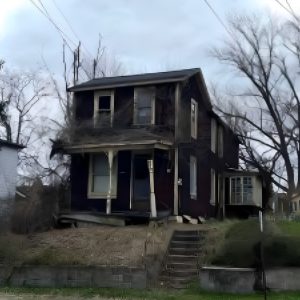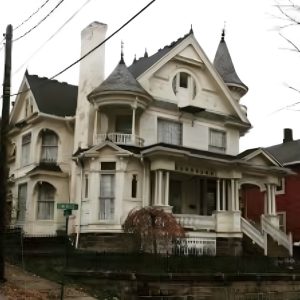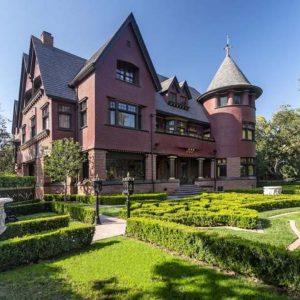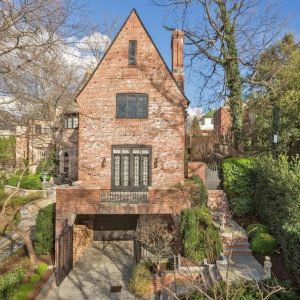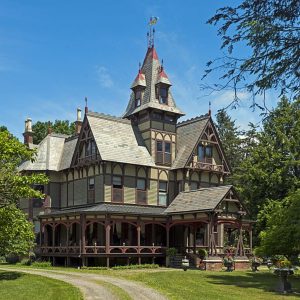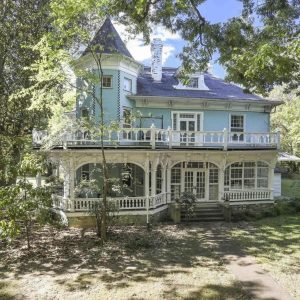History Tuesday at Old Houses Under $50K is for informational purposes only – usually NOT for sale. We feature properties that cost less than $50K sometime in their history. This one sold in 2020 for $50,000. It is the James Seymour Mansion of Auburn, New York.
LATEST VIDEOS
The Lucky Winners
You might remember it when OHU50K featured it in 2020. Back then, the City of Auburn was selling it for $50,000. After reviewing 204 submissions made by interested parties, the city council chose Glenn Joynt and Katherine Klink Joynt and their seven children. Katherine was originally from Auburn, but the family was living in Doylesburg, Pennsylvania, where they managed the Amish produce co-op Path Valley Farms. With their comprehensive 3-ring binder of plans and a budget of $155K over the $50K asking price, they were the lucky winners of the mansion. They won over teachers, CEOs and even a TV personality. The Joynts plan to move back to Auburn and restore the home within five years.
Built in 1861, inside this three-story historic beauty, you’ll find nearly 6, 000 square feet of living space, a stunning hand-crafted curved staircase, pocket doors, hardwood floors, 4 marble fireplaces, 10 bedrooms, 5 bathrooms (3 full, 2 half), beautiful original custom woodwork and built-in cabinetry. The home is situated on nearly 1 acre of land with a 2-story carriage house.

Family History
James S. Seymour
The mansion was built for Auburn banker James S. Seymour in 1861. Mr. Seymour was well known for his philanthropy, having founded the Seymour Library and the Auburn City Hospital.
*

*

*

Charles A. McCarthy
The house was later owned by Charles A. McCarthy, founder of Dunn and McCarthy Shoes.

The Dunn & McCarthy Shoe Factory opened in 1891 with access to the nearby Owasco River to power its cutting edge use of assembly line techniques. After Charles McCarthy became a partner with Dunn, the company employed 2,000 people by 1900 and become a national name. Sadly, as shoe imports increased the company closed its doors three years prior to the fire.



*

*

*

*


*

*

*

*

*

*

*

*

*

*

*

*

*

*

*




